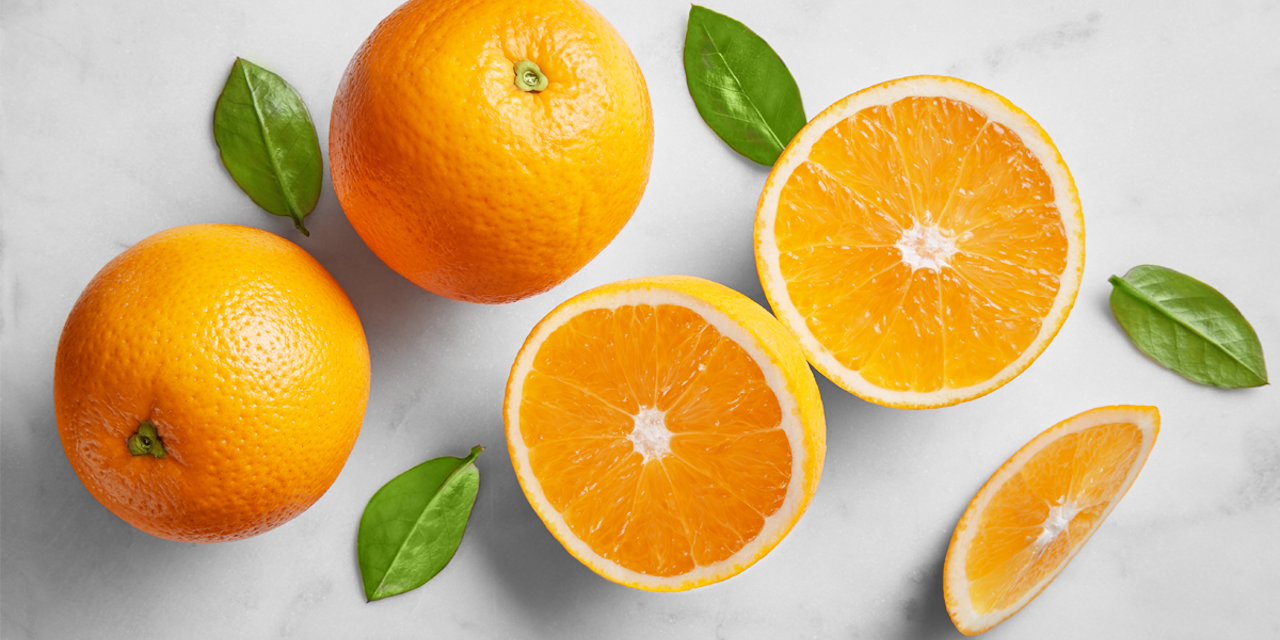Going Au Naturel
Take an orange for instance. An orange weighing about 100 grams contains 47 calories, 0.1 grams of fat, 0.9 grams of protein, 9 grams of sugar, a…
- Published: 6/7/2019
- Categories:
- 3 min. read

- Published: 6/7/2019
- Categories:
- 3 min. read
From scratch.
It’s how I grew up. She made it look easy, and I know now that it wasn’t, but my mom skipped the frozen food, the tv-dinners, and the premade sauces and made everything from the roots up. Don’t worry, we still drank from concentrate juices, and we still ate white (gasp) bread and rice, at least until she discovered those weren’t great either.
So why all the extra work? Was it just a waste of time?
The simple answer is no.
The way foods come to us; in their most natural state, is typically the best state.
Here’s why.

Take an orange for instance. An orange weighing about 100 grams contains 47 calories, 0.1 grams of fat, 0.9 grams of protein, 9 grams of sugar, and 2.4 grams of dietary fibre. Compare that to a cup of orange juice at the same weight; 45 calories, 0.2 grams of fat, 8 grams of sugar but only 0.2 grams of dietary fibre, and 0.7 grams of protein. For just two calories more, you get more fibre, which will keep you fuller for longer, and you get all the benefits of the roughage in the skin of the orange segments, usually skipped in juice.
Let’s do one more. A cup of rice for example. White rice is made by removing the husk, bran, and germ from the grain, and polishing it. White rice, as a result, lacks a lot of the nutritional benefits found in brown rice or wild rice. 100 grams of cooked white, long-grain rice contains 130 calories, 0.3 grams of fat, 28 grams of carbohydrates, of which 0.4 grams are dietary fiber, and 2.7 grams of protein. It’s not a great source of a lot of vitamins, contributing around 4% of your daily amount of magnesium. Swap that white rice for brown rice, and it looks a little different; 111 calories instead of 130, 23 grams of carbohydrates of which 1.8 grams are dietary fiber, 2.6 grams of protein, and 10% of your recommended daily intake of magnesium. With wild rice, the nutritional benefits are even greater; it’s a lot more calorie dense, so 100 grams will give you 357 calories, 1.1 grams of fat, 75 grams of carbohydrates, of which 6 grams are dietary fiber, 15 grams of protein, and a generous vitamin boost; 11% of recommended daily intake of iron, 20% of vitamin B-6, and 44% of magnesium.
The ‘purer’ or more ‘refined’ you go, the fewer health benefits there are in the food you’re eating. That’s why it’s best to eat your food as close to how it occurs in it’s natural state.

And we know, it may seem daunting, especially if you’ve always eaten processed or premade food, but do your best to see it as an adventure, and ease into it. Have a day each week where you pick a recipe online and go homemade. As hyped or corny as it may sound, there’s something magical about starting with simple ingredients and making them into something unified and delicious.
What can you do to cut back on processed foods and eat cleaner this week?
All of the content and media on Lifesum is created and published for information purposes only. It is not intended to be used as a substitute for medical advice or treatment. Users should always consult with a doctor or other health care professional for medical advice. If you have or think you are at risk of developing an eating disorder, do not use the Lifesum app and seek immediate medical help.